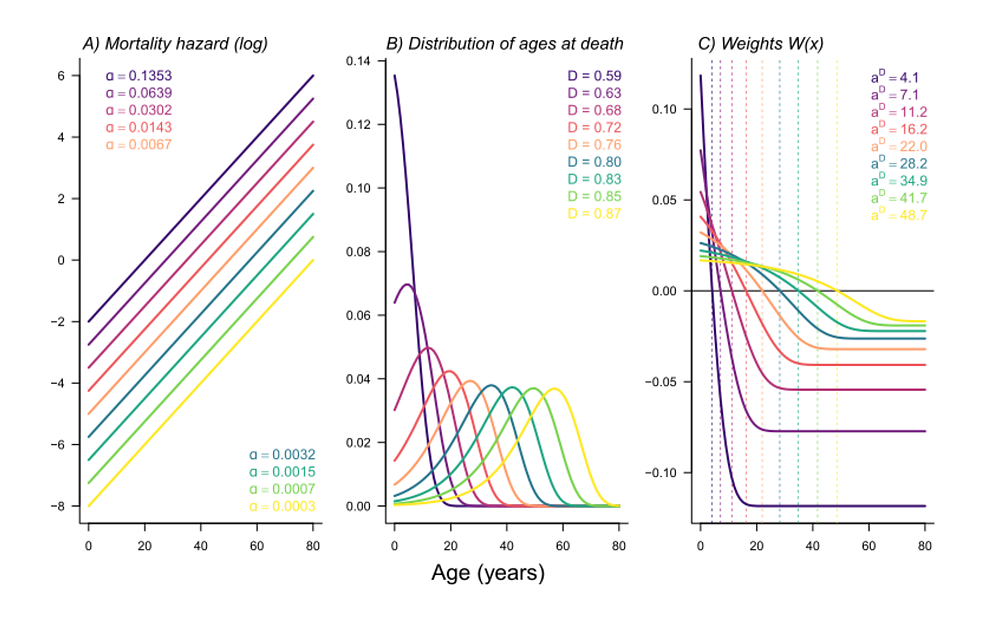Arbeitsbereich
Bevölkerungsdynamik und Nachhaltiges Wohlbefinden
Auf einen Blick
Projekte
Publikationen
Team
Projekt
Formal and Statistical Approaches to the Study of Inequalities in Mortality
Ugofilippo Basellini, Esther Dorothea Denecke, Ana Cristina Gómez Ugarte Valerio, Roland Rau, Emilio Zagheni, Jose Manuel Aburto (MPIDR / University of Oxford, Vereinigtes Königreich von Großbritannien und Nordirland); in Zusammenarbeit mit Carlo Giovanni Camarda (French National Institute for Demographic Studies, Paris, Frankreich), Pavel Grigoriev (Federal Institute for Population Research, Wiesbaden, Deutschland), Fanny Janssen (Netherlands Interdisciplinary Demographic Institute, The Hague, Niederlande)
Ausführliche Beschreibung
Formal demographic relationships and statistical methods have long been the subject of significant interest from demographers, actuaries, and statisticians, who have laid the rigorous foundations upon which demography is based. Formal and statistical demography remain active areas of research today, as advances in these fields play a fundamental role for the progress of population science.
In this project, we develop and introduce new formal demographic relationships and statistical methods that can provide novel insights into the study of health disparities. We focus in particular on: (i) investigating new relationships between life expectancy and lifespan equality; (ii) monitoring and comparing changes in lifespan equality across countries, time, and cohorts; and (iii) analyzing mortality inequalities across socioeconomic groups, space, and time, including for small areas.
The development of novel formal relationships sheds light on patterns of mortality inequalities. For example, we have shown in a study that life expectancy and lifespan equality are not independent of each other but rather have a long-term dynamic relationship that governs their joint behavior (Aburto et al. 2020). In another study, we introduced the Drewnowski index for the study of lifespan equality across time and space. We detailed the mathematical relationships related to the threshold age (the age separating positive versus negative contributions to lifespan equality) and how changes in equality over time relate to changes in life expectancy (Aburto et al. 2022). A further study focused on the analysis of the Italian longevity transition by analyzing the causes-of-death contributions to the changes in life expectancy and lifespan inequality. Our findings have uncovered the contributions of cardiovascular diseases and neoplasms to the latest increase in life expectancy but not necessarily to the decrease in lifespan inequality (Nigri et al. 2022).
Next, we aim to study and monitor mortality inequalities across countries and/or socioeconomic groups over time. In these situations, however, we may have populations that are small. One challenge in the study of mortality inequalities across different regions or socioeconomic groups is the small number of death counts, which can be erratic, which occurs in small populations, and which can arise in various situations. For example, countries may simply have a relatively small number of inhabitants or analyses are conducted across different regions or socioeconomic groups. We thus aim to study and potentially develop new methods that can stabilize estimates of mortality indexes in these small populations.
Research on socioeconomic inequality in mortality hinges on the availability and quality of data. Given these limitations, there exists a tradeoff between data availability and measurement precision. We thus aim to evaluate the measurement of socioeconomic inequalities in mortality under different data availability scenarios and to develop alternative and more robust approaches to quantify socioeconomic inequalities in mortality that incorporate and correct for possible data limitations but also take advantage of the best quality data.
Verschiedene Szenarien der Gleichheit der Lebenserwartung (gemessen durch den Drewnowski-Index) und der Altersschwellen nach dem Gompertz-Modell

Gompertz-Sterblichkeitsmodell mit positiver Alterung (ß > 0) für verschiedene Niveaus der Ausgangssterblichkeit a und eine feste Alterungsrate ß = 0,1. In diesem Rahmen nehmen die Gleichheit der Lebensspanne (D) und das Schwellenalter (aD) zu, wenn das Sterblichkeitsniveau (a) sinkt. © Aburto et al. (2022) © MPIDR
Alterung, Sterblichkeit und Langlebigkeit, Projektionen und Vorhersagen, Statistik und Mathematik
Europa, Japan, Schweden, Vereinigte Staaten
Publikationen
Bonetti, M.; Basellini, U.; Nigri, A.:
Demographic Research 50:44, 1281–1300. (2024)

Gómez Ugarte Valerio, A. C.; Basellini, U.; Camarda, C. G.; Janssen, F.; Zagheni, E.:
MPIDR Working Paper WP-2024-007. (2024)

Riffe, T.; Permanyer, I.; Tursun-Zade, R.; Muszynska-Spielauer, M.:
MPIDR Working Paper WP-2024-013. (2024)

Riffe, T.; Villavicencio, F.; Gonzalez-Forero, M.:
MPIDR Working Paper WP-2024-014. (2024)

Denecke, E. D.; Grigoriev, P.; Rau, R.:
arXiv e-prints 2302.01693. unpublished. (2023)

Gómez Ugarte Valerio, A. C.; Garcia-Guerrero, V. M.:
Population Research and Policy Review 42:57, 1–22. (2023)

Aburto, J. M.; Basellini, U.; Baudisch, A.; Villavicencio, F.:
Theoretical Population Biology 148, 1–10. (2022)

Nigri, A.; Aburto, J. M.; Basellini, U.; Bonetti, M.:
Scientific Reports 12:22624, 1–10. (2022)

Bonetti, M.; Gigliarano, C.; Basellini, U.:
In: Gini inequality index: methods and applications, 1–18. Boca Raton: Chapman and Hall/CRC. (2021)
Aburto, J. M.; Villavicencio, F.; Basellini, U.; Kjærgaard, S.; Vaupel, J. W.:
Proceedings of the National Academy of Sciences of the United States of America 117:10, 5250–5259. (2020)
